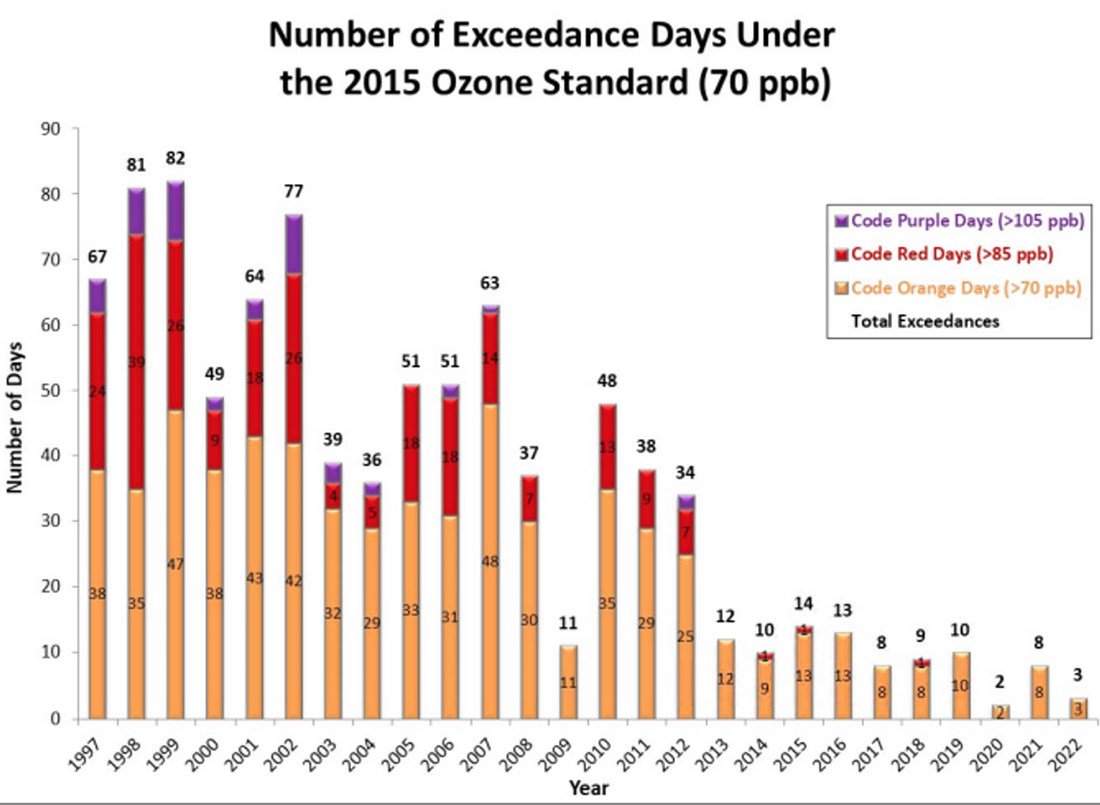The metropolitan Washington region experienced just three “code orange” unhealthy air days in 2022, a decrease from eight days in 2021, according to data collected as part of the Metropolitan Washington Council of Governments’ Ozone Season Summary. The newly released data was presented on Wednesday by COG staff to the Metropolitan Washington Air Quality Committee (MWAQC).
2022 had the second lowest number of days exceeding the Environmental Protection Agency’s National Ambient Air Quality Standards (NAAQS), and the region had its best three-year period (2020-2022) since COG began tracking air pollution. The lowest number of exceedances recorded for metropolitan Washington was in 2020, when the region experienced just two “code orange” days. The region has not experienced a more serious “code red” unhealthy air day since 2018.
Ozone levels are exacerbated by high temperatures, low wind, local emissions, pollution transported into metropolitan Washington from outside the region, and other environmental factors. In 2022, despite favorable weather conditions for increased ozone levels, the low number of exceedances suggests the region’s air quality continues to improve year over year.
“Our region’s continued focus on reducing emissions by power plants, promotion of more environmentally-friendly travel options and telework, and programs to encourage renewable and efficient energy use have had a significant impact on improved air quality,” explained MWAQC Chair and Arlington County Board Member Takis Karantonis. “We no longer experience poor air quality as a result of weather conditions that would have typically resulted in unhealthy air.”
COG data shows that, in recent years, multiple contributing factors must be present to result in an ozone exceedance. Previously, just a few factors, such as a combination of high temperatures and low wind, could create high ozone conditions. Just 10 years ago, the region experienced 34 unhealthy air days.

Poor air quality contributes to increased severity of heart and lung disease, aggravates respiratory conditions, and can be particularly dangerous to children, older adults, and individuals with underlying health conditions.
Based on current data, the region would meet federal ozone standards, determined by a 3-year average of the fourth-highest daily maximum ozone concentrations. Meeting this standard has been a longstanding priority for the COG Board.
The Metropolitan Washington Air Quality Committee, which is staffed by COG, coordinates air quality planning in the region. Its members include area elected officials, environmental directors, and state air management and transportation officials. COG provides air quality forecasts for metropolitan Washington. It also educates the public about voluntary actions people can take to reduce pollution and the health risks of bad air quality through its Clean Air Partners program, which is co-sponsored by the Baltimore Metropolitan Council.
MORE:
Air Quality Progress Dashboard
Ozone Season Summary